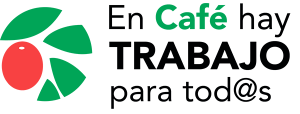PREGUNTAS FRECUENTES
¿Cuándo inicia la cosecha en mi región?
Las fechas de recolección van a variar entre una región y otra, a continuación se presentan las fechas estimadas de inicio y fin de cosecha para cada una de las regiones cafetaleras.
| REGIÓN | INICIO | FINAL |
| Turrialba | Julio | Enero |
| Orosi | Julio- Agosto | Enero- febrero |
| Brunca | Agosto | Febrero |
| Guanacaste | Agosto | Febrero |
| Tarrazú | Noviembre | Marzo |
| Valle Central | Octubre | Febrero- Marzo |
| Tres Ríos | Octubre | Febrero- Marzo |
| Valle Occidental | Noviembre | Marzo |
¿Cuáles son las verdaderas funciones del ICAFE en campaña?
El Instituto del Café de Costa Rica (ICAFE), tiene como función ser enlace entre recolectores y productores de café durante la cosecha 2020-2021.
El ICAFE, además es la encargada de desarrollar una plataforma para la conexión entre ambos sectores. También es la encargada de desarrollar una campaña de comunicación para informar y motivar a los costarricenses o extranjeros (debidamente inscritos ante los instituciones correspondientes), para que se incorporen en la recolección de café cosecha 2020-2021.
El ICAFE por sus funciones establecidas en la Ley 2762, NO es empleadora de recolectores de café, ya que este aspecto es específico entre el productor y el recolector de café.
¿Qué debo hacer para recolectar café? Toggle Title
—–
¿Qué son zonas de maduración temprana, media y alta?
La fisiología de una planta de café está muy marcada por las condiciones que influyen de manera directa en el cultivo, como lo son la altura y el clima (temperatura y precipitación), lo cual hace que en determinadas zonas sus floraciones y cosecha se adelante dando como resultado una maduración temprana.
En Costa Rica existen regiones cafetaleras de maduración temprana, donde la época de recolección se inicia primero, en Turrialba , Coto Brus y Pérez Zeledón, las graneas dan inicio entre los meses de agosto y setiembre; en estas regiones el óptimo de cosecha se da en el mes de noviembre.
En las demás regiones la maduración del café fruta es media y tardía, en Valle Central, Valle Occidental y Zona Norte las graneas se inician en octubre; y el óptimo de cosecha en el mes de diciembre. Por su parte en la región de Los Santos los primeros granos se empiezan a recolectar hasta en el mes de noviembre y el óptimo de cosecha se da en el mes de enero.
¿Qué precio tiene la Cajuela?
Según el Ministerio de Trabajo, los productores de café deben pagar como mínimo ¢1.011,22 por cada cajuela de café recolectada.
En algunos casos, hay productores que pueden llegar a pagar más por cada cajuela recolectada, pero esto va a depender de la calidad del café recolectado, así como de la fase de cosecha en que se encuentren.
¿Cómo me traslado a la zona cafetalera?
En el país hay 8 regiones cafetaleras principales (Valle Central – Valle Occidental – Orosi – Tres Ríos – Tarrazú – Brunca – Guanacaste- Turrialba)
¿Qué beneficios hay a la hora de recolectar café? Toggle Title
——-
¿Qué implementos se necesitan para recolectar café?
Los implementos básicos para recolectar café son el canasto, sacos, mecate, sombrero, pañuelo, vestuario apropiado y cómodo, botas, capa, radio, un buen desayuno, almuerzo y mucho entusiasmo de recolectar café.
¿Cómo se prepara el Sector Café, ante el COVID-19?
El Instituto del Café de Costa Rica (ICAFE) en conjunto con diversas instituciones han desarrollado una serie de protocolos, lineamientos, y herramientas para prevenir y enfrentar el COVID-19. Estas acciones son fundamentales para el buen funcionamiento de las fincas cafetaleras durante la Cosecha 2020-2021.
Con la aplicación de estas herramientas el Sector Cafetlaro se convierte en un sector preparado y responsable para continuar ejerciendo las acciones necesarias y fundamentales dentro de las fincas cafetaleras.
A continuación puede descargar los protocolos y lineamientos:
| a. Lineamientos-generales-actividades-humanas.pdf |
| b. ICAFE-P-001. Protocolo para la implementación de directrices y lineamientos sanitarios para COVID-19 en el sector cafetalero. Sector cafetalero. |
| c. Infografía: Procedimiento para acceder al régimen de excepción para la regularización migratoria de las personas trabajadoras de los sectores agropecuario, agroexportador o agroindustrial. |
| d. Infografías: solicitud migratoria trabajadores del agro. |
| e. Comunicado Prensa: Autorizado protocolo sanitario en el sector cafetalero |
| f. LS-SI-021. Lineamientos generales para el transporte de empleados agropecuarios, ante la emergencia por covid 19.pdf |
| g. LS-CS-015. Lineamientos generales para las fincas cafetaleras que contratan mano de obra migrante (indígenas ngöbe-buglé) en el marco de la alerta por (covid-19). |
| h. LS-SI-017. Lineamientos Generales para empacadoras de alimentos y fincas del sector agrícola en el marco de la alerta por COVID-19. |
| i. Circular no.2931 protocolo nôgbe buglè.pdf |
| j. Protocolo para recolección de café de la cosecha 2020 – v5 |
| k. IICA-medidas preventivas COVID-19 Sacha Trellez.pdf |
¿Cuál es el horario para recolectar café?
El horario para recolectar café inicia desde las 6:00 am y se extiende hasta las 3:00 pm en la mayoría de los casos, sin embargo, este horario va a depender de cada productor, ya sea que por temas logísticos y de condiciones climáticas finalicen la jornada en un horario posterior al mencionado.
¿Qué son las casas de la Alegría?
Casas de la Alegría son centros de cuido para los hijos e hijas de recolectores de café, que durante la época de cosecha migran desde sus casas a las fincas de café donde viven mientras trabajan. El objetivo es poder brindarles a los niños una nutrición y educación adecuada que promueve su cultura y fortalece el vínculo con sus tradiciones, evitando a su vez que los niños estén expuestos a condiciones no aptas en la finca de café.
Las Casas de la Alegría son administradas por una Cooperativa de Café en cada una de las regiones donde se encuentran; en Coto Brus son administradas por Coopesabalito, en Los Santos por Coopetarrazú y en Grecia por Coopevictoria, que funciona exclusivamente para los hijos de los recolectores miembros de la Cooperativa. En caso de requerir información para que su hijo o hija menor de 12 años pueda asistir a las Casas de la Alegría mientras usted recolecta café, le agradecemos comunicarse con las personas encargadas de cada una de las Casas:
| REGIÓN | PERSONA ENCARGADA | CONTACTO |
| Coto Brus | Emmanuel Gómez | 6052-2142 |
| Los Santos | María José Naranjo | 8558-5140 |
¿Cuál es el procedimeinto de pago en el cafetal?
No hay un método definido para el pago de la recolección, puede variar dependiendo del productor, los más comunes son:
- A la hora de medir la cajuela el recolector acerca el canasto con café y el productor mide que sea la cajuela completa y se le coloca el efectivo dentro del canasto.
- En otros casos, se deposita dentro del canasto un boleto o ficha, con un valor determinado, que al final de la semana se hace en efectivo monetario el cambio de boletos.
- Otra modalidad de pago es cuando el productor anota en un cuaderno lo recolectado por día de cada recolector y al final de la semana se le paga el total recolectado.
- Algunos productores están usando la modalidad de depositar el dinero por medio de transferencia bancaria, se anota en un cuaderno lo recolectado recolector y se deposita por día o por semana, según acuerdo que se establezca entre recolector y productor.
- También, se paga bajo la particularidad de lote, en este caso el productor pasa por las calles y recoge todos los sacos los mide como un lote y lo paga como corresponde.


